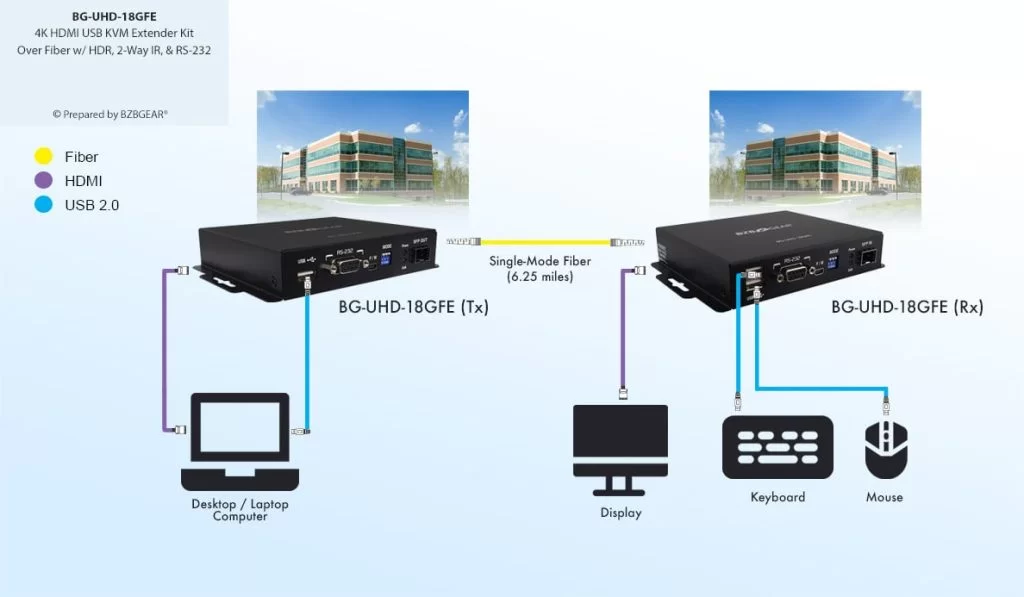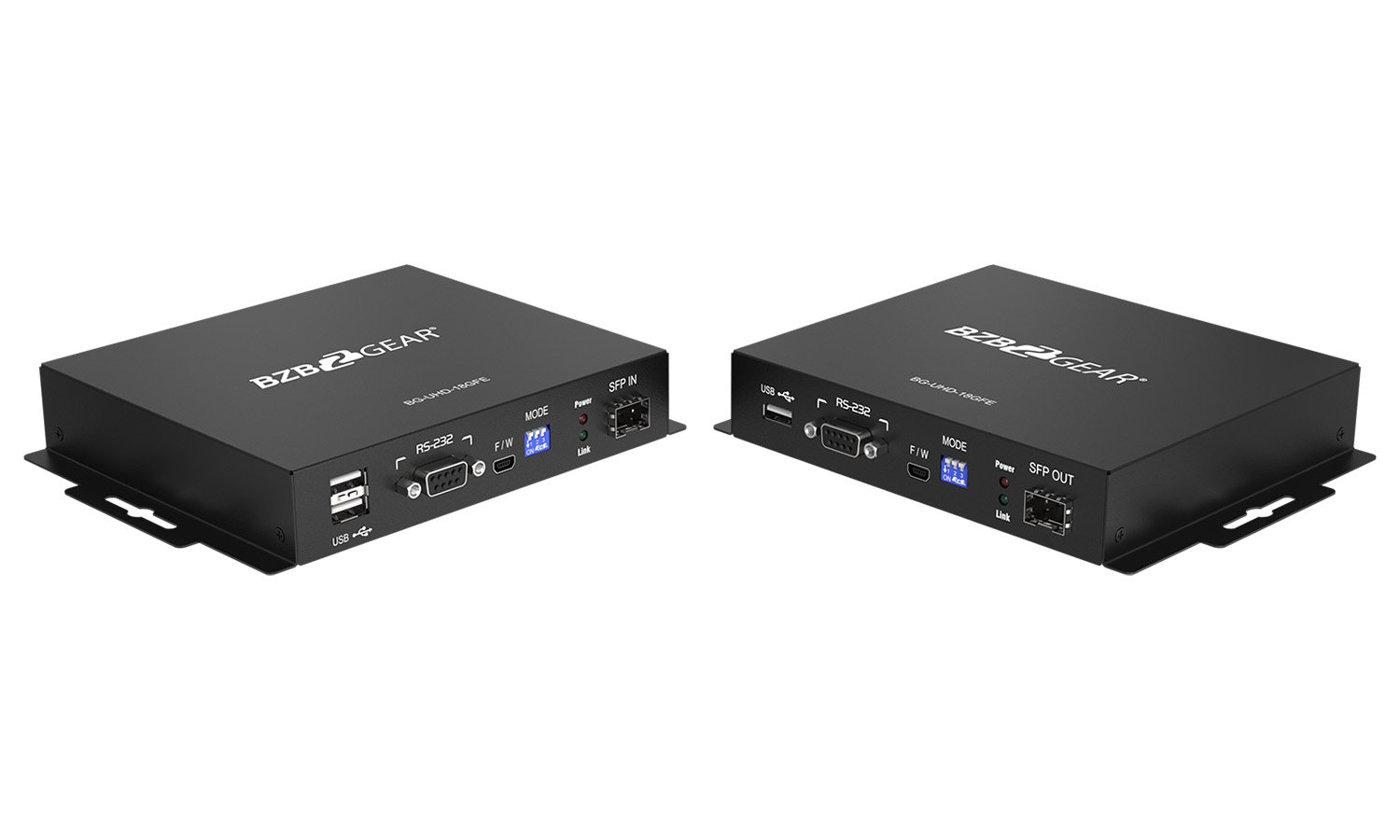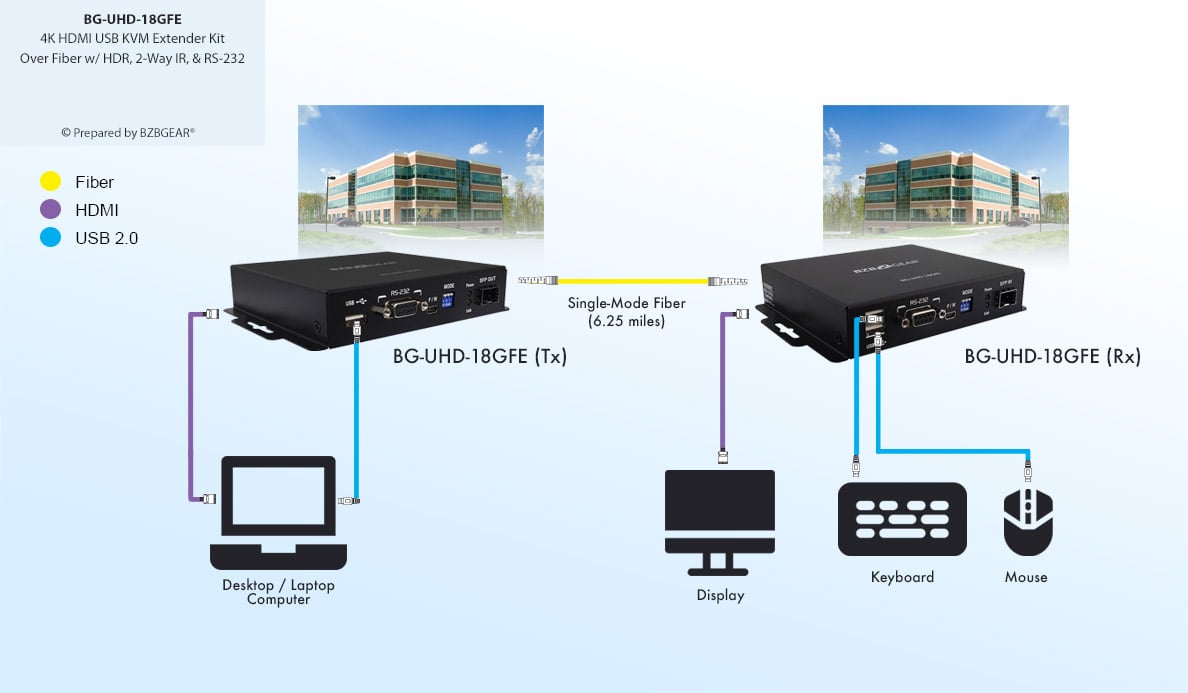How Fiber Optics and KVM Extenders Connect Buildings Miles Apart

Fiber optics is the preferred way of transmitting and receiving high-speed data long distances up to 6.25 miles. Fiber optics optimizes signal quality and speeds, essentially eliminating latency issues. Single-mode fiber optic cables use cable strands made of glass or plastic to transmit signals via light. Whereas traditional copper cables send data via electrical signals and is not suitable for extreme long distances, nothing compares to fiber optic data transfers at light speed. Well, unless of course, you’re traveling at Ludicrous Speed. But that’s a discussion for a different day.
Fiber optic cables are found in most commercial applications and is embedded in structural environments for business, government, education, communications, and even residential homes.
THE SCENARIO
A business has two buildings: a main office and a satellite office. The main office has a large database computer server that requires access from the satellite office for interacting with software programs during meetings.

The goal is to incorporate KVM (keyboard, video, mouse) and USB functionality along with audio and video. They want to send all this data and control abilities from the server/host computer (in the main office) to the conferencing room’s large TV display (in the satellite office). The issue is the two offices are a mile apart from each other. Fortunately, single-mode fiber optic cables were installed long ago for communication between the two buildings.
THE SOLUTION
Let’s connect these two buildings using fiber optics and a KVM extender. The BZBGEAR® BG-UHD-18GFE KVM/HDMI long distance extender transmits and extends audio, video, and data signals 6.25 miles in distance using single-mode fiber optic cables. Watch the following demo video from our YouTube channel BZB TV for an in-depth look.
Connect the computer server at the main office to the BG-UHD-18GFE transmitter’s HDMI input using an HDMI cable. The HDMI cable must support 4K@60Hz at 18Gbps. This connection supplies audio and video to the large TV display at the satellite office where the BG-UHD-18GFE receiver is located. For KVM functionality, connect a USB 2.0 Type-A cable from the computer's USB port to the transmitter’s USB input.

Connect the existing fiber optic cable via an SFP transceiver module (sold separately) to the SFP output on the transmitter. Once all connections are made, you’ll need to connect the receiver unit at the satellite office before powering up.
At the satellite office, connect the fiber optic cable using an SFP transceiver module to the BG-UHD-18GFE receiver. Then connect an HDMI cable from the large TV display to the HDMI output on the receiver. Next, connect the USB 2.0 peripherals (e.g., keyboard and mouse) to the USB Type-A ports on the receiver. Both transmitter (main office) and receiver (satellite office) units are now ready to power up for a successful signal transmission.

For more information, contact BZBGEAR at 1.888.499.9906 or email info@bzbgear.com. Browse our online catalog for Pro AV and live streaming camera solutions to fit any size application or budget. Make sure to catch the buzz on BZB TV for unboxings, demos, and How To videos. And please show your support by subscribing! We appreciate you and will keep you informed on all the latest AV gear.
8.00 a.m. - 5.00 p.m. (PST)
10.00 a.m. - 3.00 p.m. (PST)
(by appointment only)



